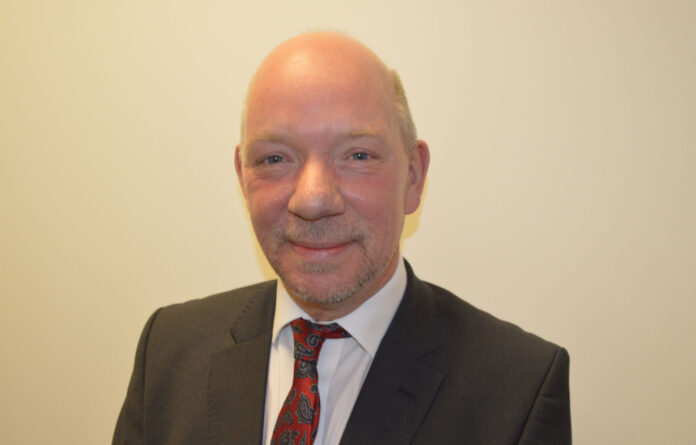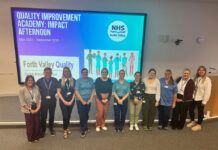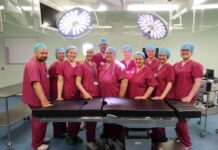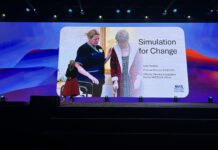Board Members are responsible and accountable for setting the overall strategy and direction of the organisation, approving key strategic plans, priorities and targets and monitoring performance against them.
Our Non-Executive Board members are appointed by the Scottish Government to provide external perspectives and bring a wide range of specialist experience and knowledge from the public, private or voluntary sectors.
This is the first of a series of regular features in Staff News to provide more information on our Board members, their experience and work within NHS Forth Valley – starting with Allan Rennie our Vice-Chair
Allan Rennie lives in Dunblane with his wife Margaret. They have three grown-up children – all born at the former Stirling Royal Infirmary – and three grandsons – all delivered safely by the wonderful maternity staff at Forth Valley Royal Hospital.
Allan joined the Board of NHS Forth Valley in 2019 as a Non-Executive director after 35 years as a journalist, national newspaper editor and latterly managing director of Scotland’s largest print and digital publisher.
He Chairs the Board’s staff governance, remuneration and organ donation committees and is Vice Chair of the Clackmannanshire and Stirling Integration Joint Board.
He is an Honorary Professor of Media and Culture at the University of Stirling and serves as a Complaints Committee Member on UK press regulators IPSO.
Outside work, Allan enjoys splashing in muddy puddles with his grandsons and playing (atrocious) golf at Dunblane.
Allan says: “I left the media industry with lots of experience in communication, working with people in a fast-moving environment and driving innovation as we evolved from print to digital.
“I had been involved with the NHS through my newspaper’s sponsorship of the Scottish Health Awards. It was a privilege to be in the same room as so many unsung health and social care heroes.
‘So, I was so excited when the opportunity arose for a Non-Executive at my ‘home’ Board of Forth Valley. It was a chance for me to give something back to the health service that had supported me and my family over the years.
“Although nothing prepared any of us for the Covid-19 pandemic, I was so proud of the professionalism and resilience shown by local staff, especially in the early days when we could not see any light at the end of the tunnel.
“Attending the daily Care Home Strategy Group meetings, I saw first-hand the benefits of multidisciplinary working with staff being empowered to take quick decisions.
“The importance of partnership working was also reinforced in my role as chair of Clackmannanshire and Stirling IJB. We can only deliver if we adopt a whole-system approach across local health and care services that includes patients, carers and community organisations as equals.
“NHS Forth Valley has experienced many challenges over the last couple of years and faced high levels of scrutiny from the public, politicians and the media. I know from speaking to many frontline staff that the continued high levels of demand for health and care services have been difficult to manage or as one nurse put it ‘frazzling’.
“We are now seeing some green shoots with around half of the extra contingency beds at Forth Valley Royal Hospital now closed thanks to some great partnership working across acute, community, social and primary care services.”
“Post Covid, we all recognise staff wellbeing needs to be a top priority as supporting our staff is key to providing high quality, safe patient care and making our health and care services more sustainable in the long-term.
“We therefore need to ensure that you have the time and resources to do your job effectively as well as the confidence to raise, not only issues and concerns, but also ideas to improve local services. It is important the Board hears your voice – and acts on it.
“As well as being a Board member, I am also an outpatient. I have been moved by the consistent kindness and support I have received and would like to say a huge thank you to everyone involved in caring for me and the many other local patients across Forth Valley.”







